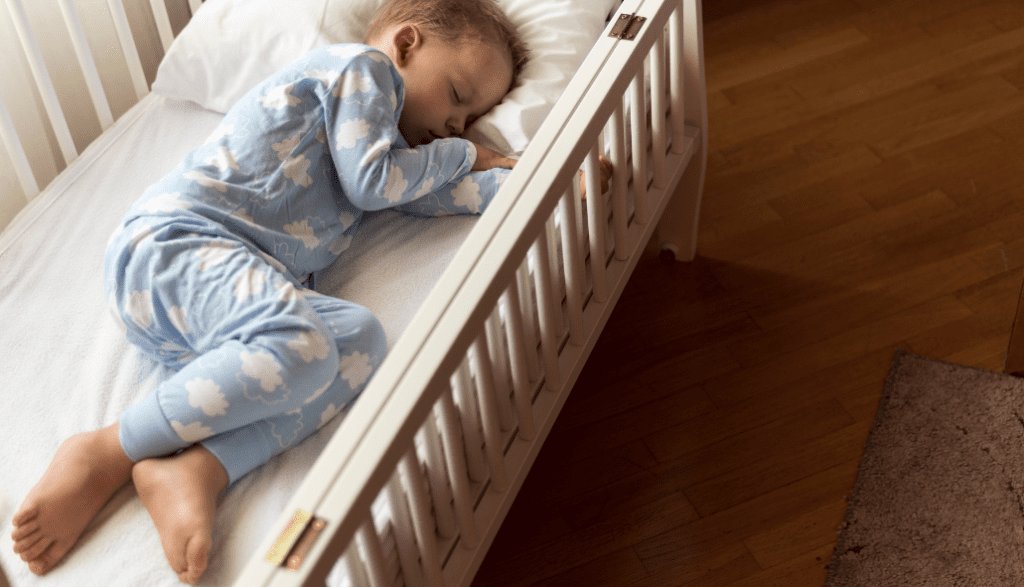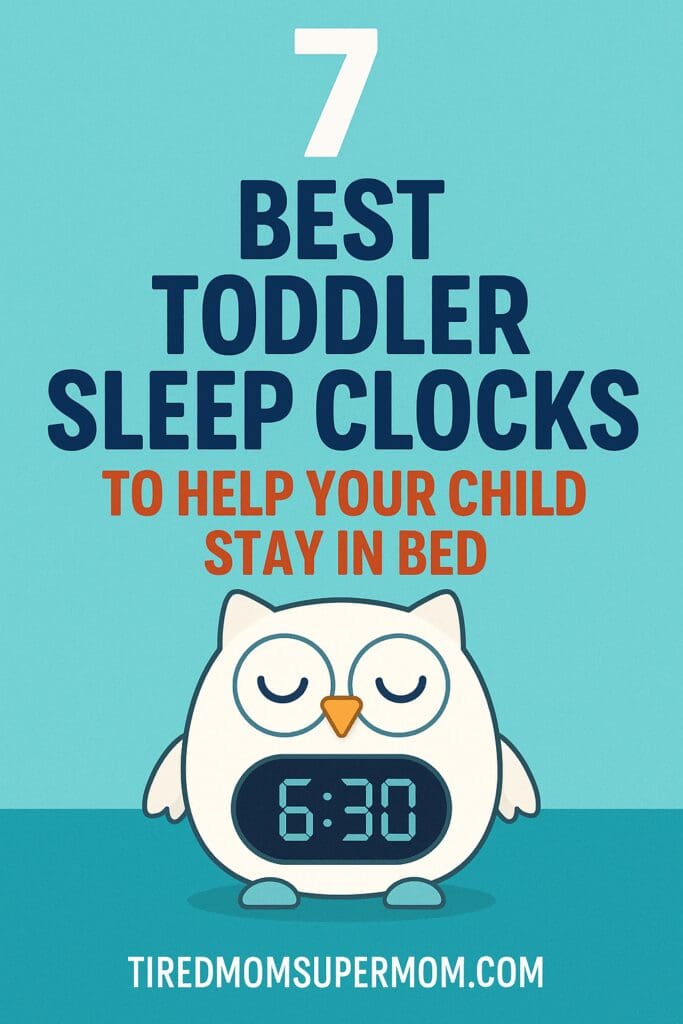7 Best Toddler Sleep Clocks to Help Your Toddler Stay in Bed
Best toddler sleep clocks can be a total game changer for parents struggling with early risers or bedtime battles.
These clocks use color cues, gentle lights, and fun sounds to help toddlers understand when it’s time to sleep—and when it’s okay to get out of bed.
In this guide, we’re sharing the best toddler sleep clocks to make bedtime smoother and mornings less chaotic.
Heads up: This post may include affiliate links. As an Amazon Associate, I earn from qualifying purchases—at no extra cost to you. Full privacy policy and disclosure here.

1. 🐣 LittleHippo Mella Ready to Rise Clock
Why Parents Love It:
- Color-coded cues: Red for sleep, yellow for play, green for wake-up.
- Built-in sound machine: Offers soothing sounds to lull your child to sleep.
- Adorable design: Kid-friendly face that appeals to toddlers.
Price: ~$49.99
Affiliate Link: Buy on Amazon
2. 🌈 Hatch Rest+ 2nd Gen
Top Features:
- Multi-functional: Combines nightlight, sound machine, and time-to-rise alert.
- App-controlled: Customize settings remotely via smartphone.
- Grows with your child: Suitable from infancy through toddler years.
Price: ~$89.99
Affiliate Link: Buy on Amazon
3. 🦉 Mirari OK to Wake! Clock
Highlights:
- Simple green light: Indicates when it’s okay for your child to get out of bed.
- Soft nightlight: Provides comfort without disrupting sleep.
- Easy to use: Intuitive controls for both parents and children.
Price: ~$39.99
Affiliate Link: Buy on Amazon
4. 🐱 B&H Sleep Trainer Clock
Why It Stands Out:
- Cute cat design: Appeals to young children.
- USB rechargeable: Convenient and eco-friendly.
- Drop-proof: Durable build for active toddlers.
Price: ~$27.99
Affiliate Link: Buy on Amazon
5. 🦖 Winshine Dinosaur Sleep Trainer
Features:
- Dinosaur-themed: Fun design encourages use.
- Color-changing light: Signals bedtime and wake-up time.
- Adjustable brightness: Ensures a comfortable sleep environment.
Price: ~$29.99
Affiliate Link: Buy on Amazon
6. 🌟 Learn & Climb Stay-in-Bed Clock
Why It’s Great:
- Color-coded lights: Red for sleep, green for wake-up.
- Digital display: Helps children learn to tell time.
- Affordable option: Budget-friendly without sacrificing features.
Price: ~$28.99
Affiliate Link: Buy on Amazon
7. 🕰️ JALL Wake-Up Light Sunrise Alarm Clock
Top Features:
- Sunrise simulation: Gradually increases light to wake your child naturally.
- Multiple alarm sounds: Choose from various soothing options.
- FM radio: Adds versatility to your child’s morning routine.
Price: ~$34.95
Affiliate Link: Buy on Amazon
✅ Comparison Table: Best Toddler Sleep Clocks
Here’s a breakdown of the best toddler sleep clocks available in 2025:
| Product Name | Price | Features | Age Range | Power Source | Amazon Link |
|---|---|---|---|---|---|
| LittleHippo Mella | ~$49.99 | Color-coded lights, sleep sounds, nap timer | 2–8 years | USB | Buy Now |
| Hatch Rest+ 2nd Gen | ~$89.99 | App-controlled, sound machine, nightlight | Newborn–8+ | Rechargeable | Buy Now |
| Mirari OK to Wake! | ~$39.99 | Green light signal, nap timer | 2–6 years | Battery | Buy Now |
| B&H Cat Clock | ~$27.99 | Nightlight, USB, cute face design | 2–7 years | USB | Buy Now |
| Winshine Dinosaur | ~$29.99 | Color lights, cute dino design, alarms | 3–8 years | USB | Buy Now |
| Learn & Climb Clock | ~$28.99 | Color cues, digital time, sleep sounds | 2–6 years | USB | Buy Now |
| JALL Sunrise Clock | ~$34.95 | Sunrise simulation, FM radio, 7 alarms | 4–10 years | Wall plug | Buy Now |
🧠 What to Look For in the Best Toddler Sleep Clocks
When shopping for the best toddler sleep clocks, keep an eye out for these features that actually work for kids and parents alike.
Not all toddler sleep clocks are created equal! Here are the most important features to consider when choosing the best toddler sleep clock for your child:
1. Color-Coded Lights
Many toddler sleep clocks use red/yellow/green lights to signal when it’s time to sleep, rest, or wake up. This visual cue helps toddlers who can’t yet read a clock understand routines.
2. Sound Machine Integration
Some models combine sleep training with soothing white noise, lullabies, or nature sounds. This feature can help ease your toddler into sleep, especially during transitions or regressions.
3. Customizable Timers
Clocks with adjustable nap timers or weekday/weekend wake times give parents more control and flexibility for evolving sleep schedules.
4. Kid-Friendly Design
An engaging look — like a dinosaur, bunny, or friendly face — can make the clock feel like a comforting bedtime buddy instead of just another gadget.
5. Ease of Use
Choose a clock with simple buttons or app controls. Some are even programmable by phone, which can be especially helpful when you’re adjusting routines without going into your child’s room.
6. Durability & Power Source
For active toddlers, a clock with a sturdy base (and no easily breakable parts) is a must. USB-powered or rechargeable options are also more convenient than those requiring constant battery swaps.
FAQ
What is the best sleep clock for toddlers?
The best toddler sleep clocks use color-coded lights and soothing sounds to help toddlers know when it’s time to sleep or wake. Parents often recommend Hatch Rest+, Mella, and OK to Wake! for consistent routines.
What age should I introduce a toddler sleep clock?
Most clocks work best for children around 2–3 years old, once they can grasp routines and light cues.
📝 Final Thoughts
Whichever product you choose from our list of the best toddler sleep clocks, remember that introducing it with patience and consistency is key to long-term sleep success.
Choosing the right sleep clock can make a significant difference in your toddler’s sleep routine. Whether you prefer a high-tech option like the Hatch Rest+ or a simple solution like the Mirari OK to Wake!, there’s a clock to fit every family’s needs.
Tip: Consistency is key. Introduce the clock as part of your child’s bedtime routine and explain its functions clearly.
📌 Pin This for Later!

